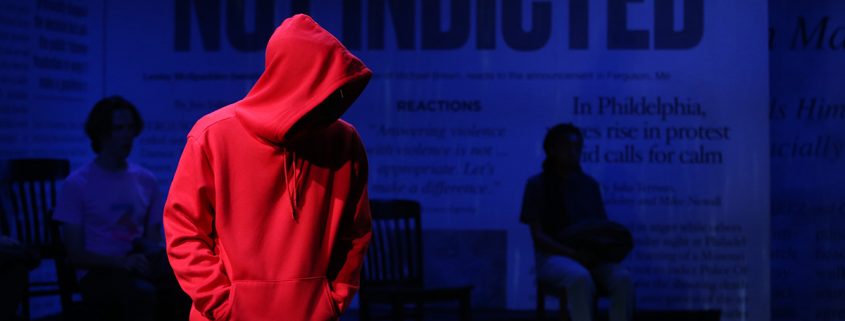REVIEW: Facing Our Truth captivates with short plays
 The USC School of Dramatic Arts debuted its production of Facing Our Truth: Ten Minute Plays on Trayvon, Race and Privilege, tantalizing vignettes about racism, prejudice and injustice in modern-day America on Thursday. The show is comprised of six 10-minute plays, each telling a unique story with different characters. In addition, each was written by a different playwright, an artistic choice that created an eclectic, diverse set of narratives and societal perspectives.
The USC School of Dramatic Arts debuted its production of Facing Our Truth: Ten Minute Plays on Trayvon, Race and Privilege, tantalizing vignettes about racism, prejudice and injustice in modern-day America on Thursday. The show is comprised of six 10-minute plays, each telling a unique story with different characters. In addition, each was written by a different playwright, an artistic choice that created an eclectic, diverse set of narratives and societal perspectives.
Facing Our Truth features a cast of 11 students, starring Omete Anassi, Ali Appelbaum, Empress Christian, Maria Eliades, Ali Lochin, Vanessa Nguyen, Samuel Pirie, Bianca Pompa, Gabrielle Rosser, Steven Vargas and Rahjul Young. The show was directed by Shirley Jo Finney, an award-winning director, actress and adjunct professor in the School of Dramatic Arts.
Not only did this production have a stellar cast and director, but it also possessed a unique, captivating set design. Throughout the duration of the show, newspaper headlines were projected onto the walls surrounding the stage, pointing to topics centered on matters of racial injustice, including the Trayvon Martin shooting. This innovative design powerfully set the tone for the piece and immediately informed the audience of the play’s central message.
“Our intention as a company was to grab the audience and take them through this journey,” Finney said. “When you walk into the space, you should be engaged immediately and you should know what the show is.”
The production as a whole stunningly portrays stories that revolve around racial biases, destructive stereotypes, heartbreak, loss and enlightenment. They venture into avenues of society that often go ignored, provoking a plethora of questions, responses and visceral reactions among audiences. As the production progresses, the plays gain momentum in expressing the actions committed against black people in America, culminating in the heart-wrenching story of Trayvon Martin, a 17-year-old black teenager shot by neighborhood watch coordinator George Zimmerman.
The first two vignettes “Intro Piacsso Quote” and “Night Vision” introduce some commonplace societal attitudes toward race, class and general bias in America. The opening play takes place on a subway, highlighting the often uncomfortable interactions that occur on public transportation. The second play begins after an interracial couple witnesses a man assaulting a woman on the street, examining the unfair assumptions we often make when identifying and describing criminals.
The final four plays are increasingly tragic, dealing with the violence, pain and death associated with racial injustice. The final play, “The Ballad of George Zimmerman,” concludes the show with a powerful examination of Martin and Zimmerman, leaving the audience with a new perspective on this baffling case. Interestingly, Zimmerman’s character is portrayed to have a beautiful voice, singing a ballad at the start of the piece.
The performance was followed by a facilitated discussion, featuring Shirley Jo Finney, the show’s director; Brent Blair, director of theatre and social change in the School of Dramatic Arts; and Shamell Bell, the arts and culture liaison for Black Lives Matter in Los Angeles. They each contributed their individual thoughts and reactions to the play, and also emphasized the significance of using art to protest injustice.
“My heart was pounding the entire time,” Bell said. “[This play] reminded me of how I began my involvement in Black Lives Matter. I began with Trayvon Martin. I began with the thought of my son. I began with the thought of Trayvon Martin’s mom. And then we got into the streets.”
In her concluding remarks, Bell encouraged students and members of the audience to get involved, to step outside in the name of injustice and to hone their voices and talents to make a meaningful contribution to the world.

